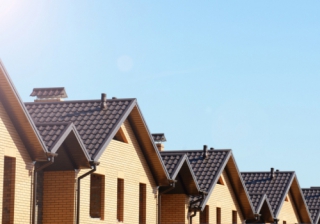
"So will house prices fall later in 2021 and 2022? Probably not, or at least not by much."
UK average house prices reached a record high of £266,000 in June 2021, which is £31,000 higher than this time last year.
Average house prices increased over the year by 13.3% in England, 16.7% in Wales, 12.0% in Scotland, and 9.0% in Northern Ireland.
The North West was the region with the highest annual house price growth, with average prices increasing by 18.6% in the year to June, up from 14.2% in May.
London continues to be the region with the lowest annual growth (6.3%) for the seventh consecutive month.
Andy Sommerville, director at Search Acumen, commented: "The 13.2% annual increase in house prices for June, fuelled by a rush of stamp duty-averse homebuyers, has left a mountain to climb not only for first-time buyers’ deposits, but also for legal professionals in terms of processing transactions on time. The tapering of the stamp duty holiday since June has finally started to cool down a market that has been red hot since last summer. Sellers may have to reconsider their pricing while some buyers who were prepared to stretch their finances might not be in a position to do so now they are facing a larger tax bill.
“However, we expect only a brief summer interlude before house prices start to grow again in the Autumn. Demand is still extremely high by historic standards, fuelled by record low interest rates and people’s attempts to adapt their lives to key societal changes, such as home working, which are set to become a more permanent feature of the post-pandemic world. At the same time, the market is still characterised by a chronic undersupply of available housing stock. These two factors are likely to sustain house price growth later this year.
“The conveyancing sector has now been operating at full capacity for the best part of a year, keeping the market moving despite unprecedented levels of demand and the once-in-a-generation challenge of the pandemic. As the pressure eases briefly, there is a crucial window of time to reflect on lessons learned. Technology has created efficiencies during the pandemic, and forward-thinking property firms have had a taste of how data-driven decisions and real-time access to information can improve the customer and adviser experience.
“Wider adoption of data-led ways of working can help to cope with the busy market we expect to see during the autumn and into next year.”
Anna Clare Harper, CEO of property consultancy SPI Capital, added: "The boom in prices relative to last year, and indeed last month, is unsurprising. The tapering down of the temporary reduction in stamp duty began at the end of June, meaning this was a ‘bumper month’. Investors, homeowners, solicitors and banks pushed hard to get transactions done in time for buyers to capitalise on lower transaction costs, a bit like the impact of a summer sale.
"Policies designed to protect consumer and investor confidence through the pandemic have created a medium-term boom, rather than this happening ‘despite’ Covid-19. Specifically, house prices were boosted by the temporary stamp duty reduction designed to fuel the housing market amidst the pandemic, lockdown-led upsizing and a flight to safer assets alongside long term low interest rates.
"The trouble is that while the outcome boosts economic confidence, it is at odds with the policy agenda on affordable home ownership. Average house prices of £265,668 seem extortionate compared with median household income of £29,000.
"So will house prices fall later in 2021 and 2022? Probably not, or at least not by much. Price rises will slow, but people don’t tend to sell houses at a lower price than they paid, unless they really need to. And, with interest rates (and therefore mortgage repayments) so low, the kind of mass sell-off needed from property owners if prices were to fall seems unlikely.
"This means property remains a relatively safe asset, and it also adds to the importance of the rental market, since we all need a roof over our heads, regardless of house prices."





